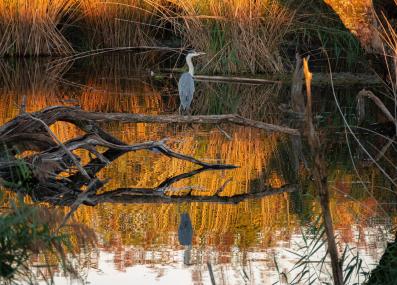Have a question?
How much human-produced carbon dioxide is taken up by faster plant growth around the world?
Close to one-third of humanity’s carbon emissions are stored on land by trees, other plants, and soil, as high CO2 levels allow for more photosynthesis.
October 30, 2023
Plants are a natural “carbon sink”: as they grow, plants use sunlight to convert water and carbon dioxide (CO2) into sugar, effectively storing carbon in their tissues. This process helps regulate our planet’s temperature by taking climate-warming CO2 out of the atmosphere.
But this “land carbon sink” is actually a recent change for our planet. Before the Industrial Revolution, humans enjoyed a stable period for the Earth’s climate when plants and soils captured about as much carbon as they released. It’s the extra CO2 in the air today—from human activities like burning fossil fuels—that has boosted the rate of photosynthesis and let plants take up more carbon, which they use to grow faster and use water more efficiently.
This is a complex process, which is also influenced by factors like deforestation and nitrogen availability, says César Terrer, an assistant professor of civil and environmental engineering at MIT who studies how plants respond to climate change. But the basic situation is clear: research has shown that the carbon absorbed by land, including plants, has been on the rise since the 1960s.1
“A little bit counterintuitive, right? To think about CO2 doing something good,” he says.
This accelerated plant growth can be confirmed in several different ways, including through climate models, field and satellite measurements, and also by looking at isotopes in plant material, according to Terrer. Today, plants absorb between a quarter and a third of human-caused emissions per year.2 (The amount changes year to year based on factors like droughts and wildfires.)
When plants absorb CO2, a portion of that carbon remains in the plants themselves, while another portion is transported to the soil plants grow in. Scientists are still working to understand how much carbon stays in plant biomass and how much is transferred to soils, as well as how climate change affects the ability of soil to store carbon.3
“It is well-established that plants have been absorbing increasing amounts of carbon in their biomass,” says Terrer. “How much carbon has been sequestered in soils, if at all—that's not well understood.”
Scientists do know that there’s only so much extra carbon plants and soils can take in.
At very high CO2 levels, plants eventually reach a point where they can’t absorb CO2 any faster. Atmospheric levels of CO2 are currently below this point for most plants, but as the world continues to warm, the efficiency with which plants absorb excess carbon will rise more and more slowly.
Climate change can also hurt plants. Warmer temperatures, wildfires, more frequent and severe droughts, rising sea levels and other climate impacts can all kill plants off. And as plants die, decay or burn, they release the CO2 they stored, reducing their ability to act as a carbon sink.
In some regions of the world, such as the Amazon Rainforest, this is already a pressing concern. The Amazon is starting to take in carbon more slowly thanks to deforestation, more frequent and severe droughts, and changing rainfall patterns. Some studies even suggest that, as it continues to lose trees, the Amazon is at risk of flipping from a carbon sink to a carbon source in the next decade.4
Ultimately, faster plant growth is not a silver bullet against climate change. “While plants are indeed absorbing more CO2 and buying us some time in the fight against climate change, it’s crucial to remember that they can only sequester a fraction of human emissions. Increased emissions will invariably lead to higher temperatures,” says Terrer.
“The good news is plants are providing some buffer against climate change. However, the future of this ecosystem service is highly uncertain, especially considering the complex interactions between climate factors and plant growth.”
Thank you to Niels Gerbitz of Salt Spring Island, British Columbia, Canada, for the question. You can submit your own question to Ask MIT Climate here.
1 Ruehr, Sophie, et al., "Evidence and attribution of the enhanced land carbon sink." Nature Reviews Earth & Environment, Volume 4, 2023, doi:10.1038/s43017-023-00456-3.
2 Friedlingstein, Pierre, et al., "Global Carbon Budget 2022." Earth System Science Data, Volume 14, Issue 11, 2022, doi:10.5194/essd-14-4811-2022.
3 Terrer, Cesar, et al., "A trade-off between plant and soil carbon storage under elevated CO2." Nature, Volume 591, 2021, doi:10.1038/s41586-021-03306-8.
4 Hubau, Wannes, et al., "Asynchronous carbon sink saturation in African and Amazonian tropical forests." Nature, Volume 579, 2020, doi:10.1038/s41586-020-2035-0







